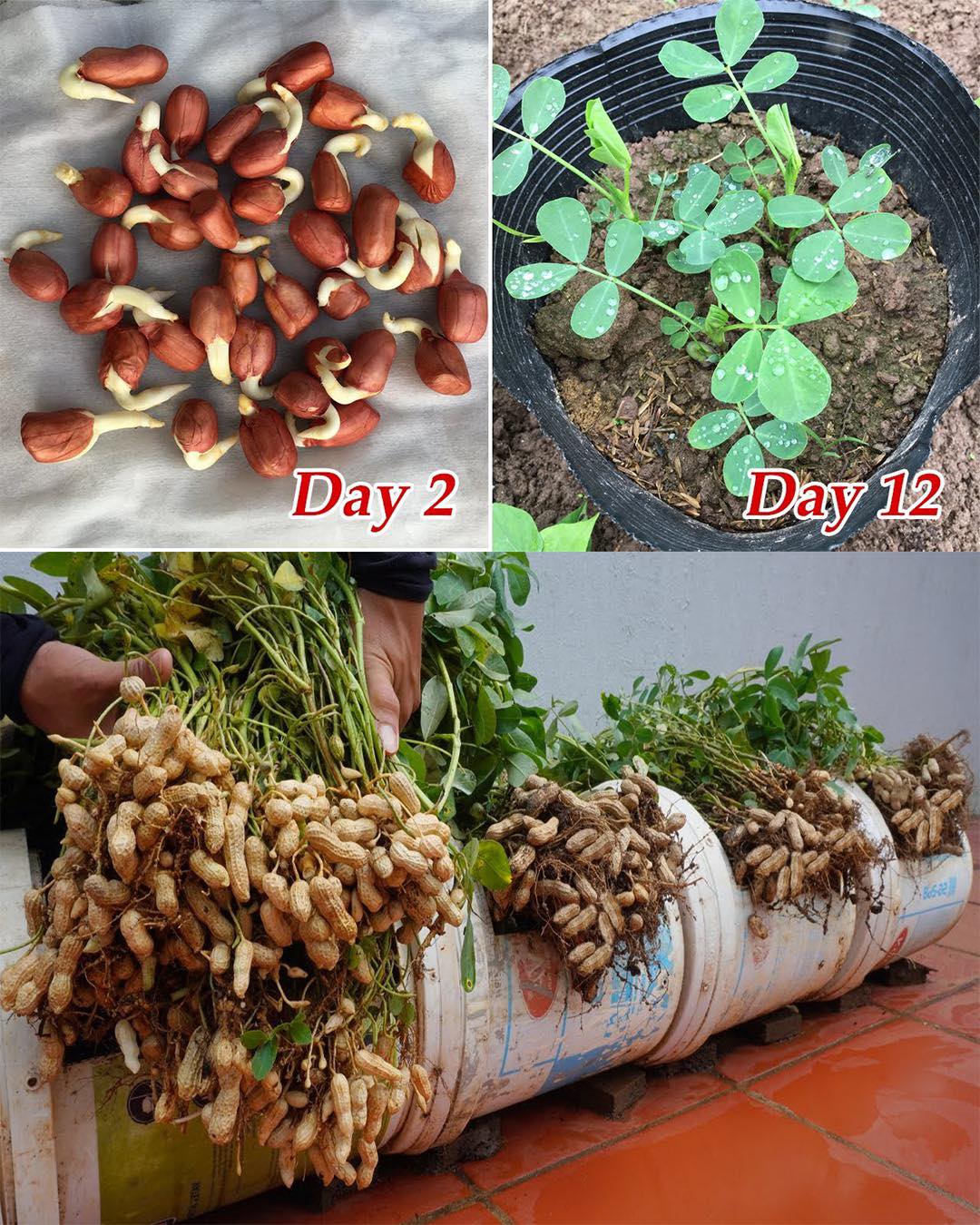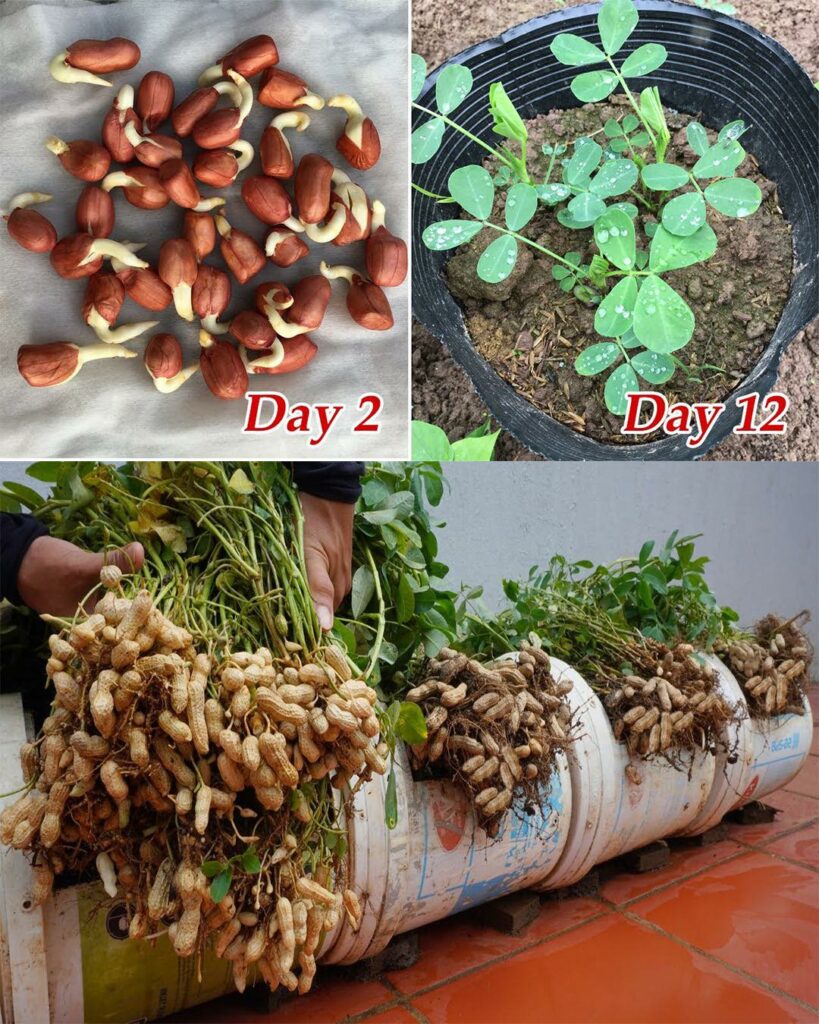

Cultivar cacahuetes en casa en recipientes de plástico reciclado es una forma gratificante y ecológica de disfrutar del sabor de los cacahuetes recién cosechados directamente desde su propio jardín. Esta guía para principiantes lo guiará a través de los pasos de cultivar maní en recipientes de plástico reciclado, brindándole una experiencia de jardinería satisfactoria y una cosecha abundante.
Materiales Necesarios:
- Contenedores de plástico reciclado (lo suficientemente grandes como para acomodar plantas de maní)
- Semillas de maní (también conocidas como granos de maní)
- Mezcla para macetas de alta calidad
- Compost orgánico
- Perlita o vermiculita (para un mejor drenaje)
- Lata de riego o manguera
- Fertilizante (fertilizante NPK equilibrado)
- Mulch (paja u hojas)
- Área de luz solar completa

Guía Paso a Paso:
- Selecting the Right Containers: Choose recycled plastic containers that are at least 12 inches deep to allow room for the peanut plants’ root development. Containers with drainage holes are essential to prevent waterlogging.
- Preparing the Potting Mix: Mix the potting mix, organic compost, and perlite/vermiculite in a 1:1:1 ratio. This mixture provides good drainage, aeration, and nutrient retention.
- Planting Peanut Seeds: Place a few inches of the prepared potting mix into each container. Plant the peanut seeds about 1 to 2 inches deep and 4 to 6 inches apart. Cover the seeds with the remaining potting mix.
- Watering: Keep the soil consistently moist but not soggy. Peanuts require regular watering, especially during flowering and pod development. Use a watering can or a gentle hose attachment to water the plants.
- Providing Sunlight: Place the containers in a location that receives full sunlight. Peanuts require at least 6 to 8 hours of direct sunlight each day for optimal growth and pod development.
- Fertilization: Apply a balanced NPK fertilizer according to the manufacturer’s instructions. Generally, fertilize the peanut plants every 3-4 weeks during the growing season. Avoid excessive nitrogen, as it can encourage foliage growth at the expense of peanut production.
- Managing Growth: As the peanut plants grow, they will produce attractive yellow flowers that eventually develop into pegs. These pegs elongate and enter the soil to form peanuts. Gently mound soil around the pegs to help them establish root systems.
- Mulching: Apply a layer of mulch around the plants to help retain soil moisture, suppress weeds, and maintain an even soil temperature.
- Harvesting: Peanuts are ready for harvest when the plants start to turn yellow and the leaves begin to dry. Carefully dig up the plants and shake off excess soil. Allow the peanuts to dry in a warm, well-ventilated area for about two weeks before removing them from the shells.
- Almacenar y Disfrutar: Una vez secos, guarde los cacahuetes en un lugar fresco y seco en recipientes herméticos. Asar o hervir los cacahuetes antes de consumirlos para obtener el mejor sabor.

Cultivar cacahuetes en casa en recipientes de plástico reciclado es una forma divertida y accesible de experimentar la alegría de la jardinería y la satisfacción de cosechar su propio cultivo. Con los materiales adecuados, el cuidado adecuado y un poco de paciencia, disfrutará de sus cacahuetes de cosecha propia en poco tiempo. Por lo tanto, arremangue, reúna sus suministros y embárquese en este emocionante viaje de cultivar maní en sus propios recipientes de plástico reciclado.
